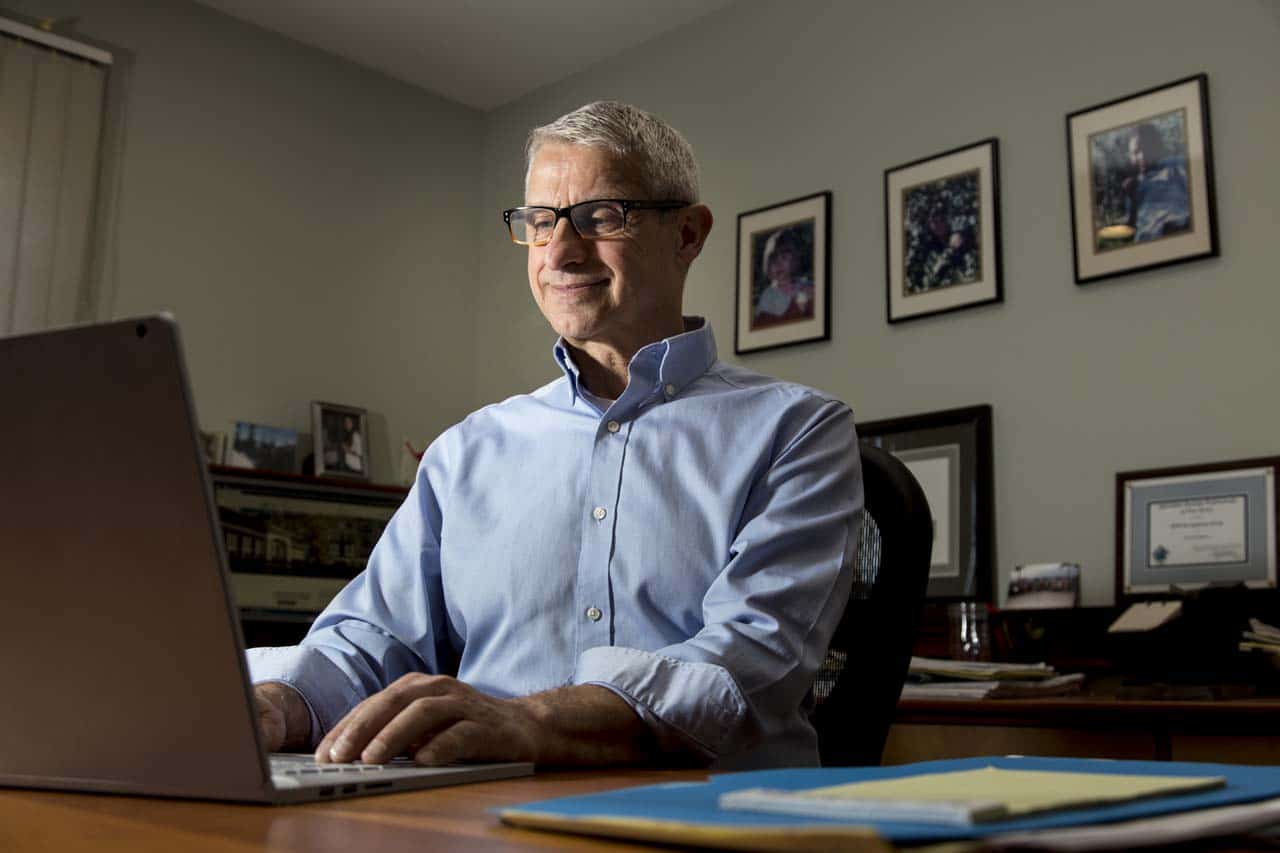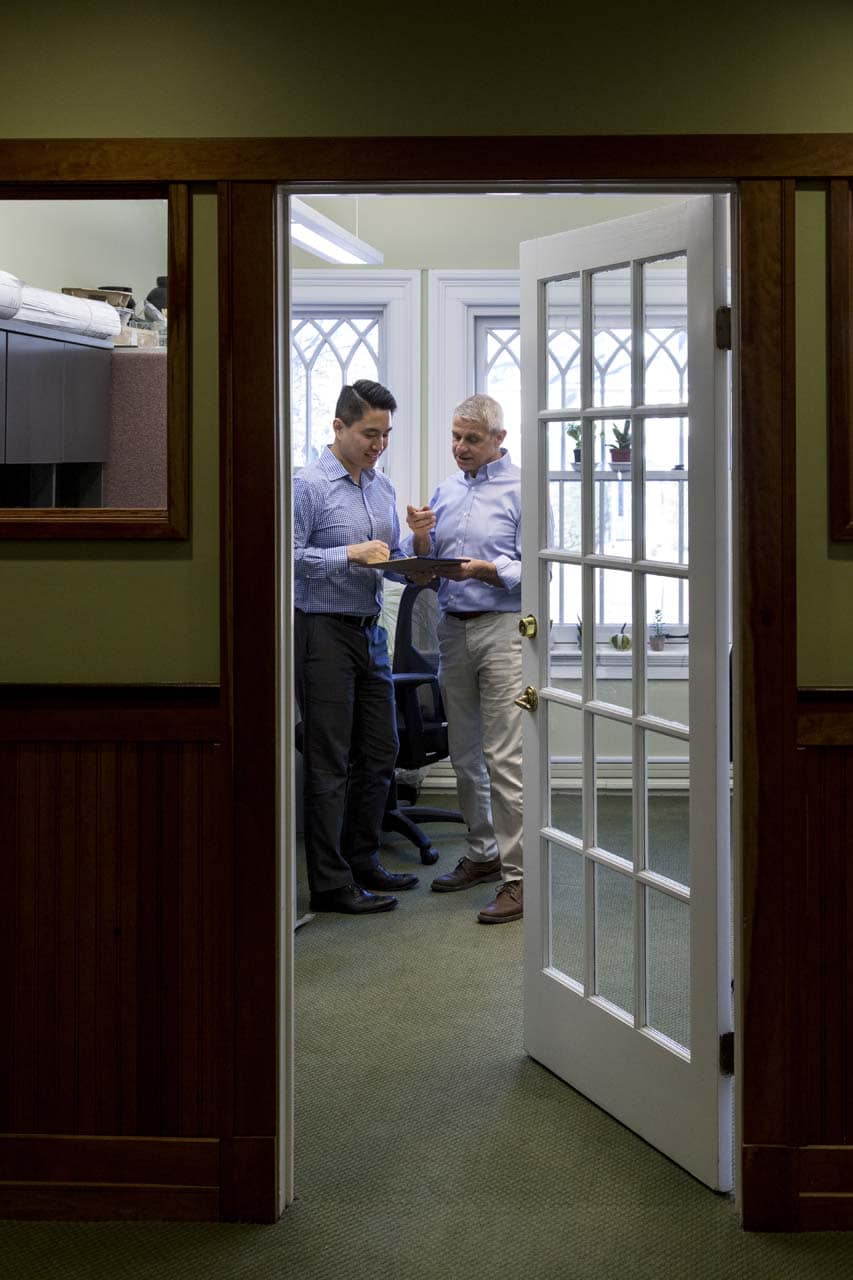THE LEADER OF AN INNOVATIVE DEVELOPMENT FIRM AND HIS PROTÉGÉ ARE CREATING A GREENER FUTURE FOR THE GARDEN STATE
BY LAURA D.C. KOLNOSKI • PHOTOS © AMESSÉ PHOTOGRAPHY
A fierce race is on in the Garden State to be not just on but ahead of the cutting edge of development practices surrounding historic preservation, energy saving “green” construction, and the efficient remediation of environmentally compromised sites. Leading the pack in these realms for three decades has been RPM Development, founded in 1986 by Al Russo, the late Al Pierri, and Edward Martoglio.
Company president Martoglio, the sole remaining founder, has turned RPM into a multi faceted and award winning firm with 185 employees and offices throughout New Jersey and Florida. Its projects range from high rises to mixed use residential/commercial, adaptive reuse, and senior citizen complexes. Its many accomplishments include saving a stately structure in Newark (thus earning the 2015 New Jersey Historic Preservation Award) and preserving and modernizing the officers housing section of a former U.S. Army base in Oceanport, turning the units into upscale residences. Transitoriented development includes the recently completed Linc 52 project in Orange, now a “transit village,” with condominiums, apartments, and ground floor retail space centered around public areas that have links to multiple modes of transit.

Other projects are completed, in progress, or pending in Union City, South Brunswick, Atlantic City, Aberdeen, Franklin Township, Hillsborough, and other areas. RPM manages a portfolio of more than 4,100 units (with an additional 600 in the pipeline) spanning both urban and suburban developments, along with large scale neighborhood redevelopment.
“I got into the construction and development business when I saw a clear need for affordable housing in New Jersey, especially with the high cost of living,” Martoglio said. “There was an opportunity to be part of the solution.”
Initially, RPM’s focus was on distressed urban locations, and it utilized state and federal programs to create high quality housing. Then, said Martoglio, he focused on “hiring smart, talented people.” Today he spends time reviewing development opportunities, visiting construction sites, preparing for new projects, and reviewing best practices with an eye to design, form, and function, and paying particular attention to environmental considerations.
In 2016, RPM was named the Energy Star Multifamily High Rise Developer Partner of the Year by the U.S. Environmental Projection Agency. The firm’s Grand Central development in Orange won the 2012 New Jersey Department of Environmental Excellence Award for Innovative Technology. That pioneering project was the first multifamily Climate Choice building in the state. Other accolades include a Green Groundbreaking Award from the N.J. Green Building Council and a Smart Growth Award from N.J. Future. (Recent data reveals that New Jersey is a leader in green certified development projects, ranking sixth in the nation.)

Martoglio credits “a close knit team of professionals” for helping guide operations. Among them is Michael Hong, who joined the firm in 2015 and quickly rose from development associate to assistant vice president of development. His background and eclectic early career, combined with what Martoglio called “great public speaking abilities,” place Hong in the vanguard of the future of development.
“When I initially met and interviewed Michael, I found him to be polished, knowledgeable, and eager to learn,” Martoglio recalled. “He came in with an impressive resume and great educational credentials. He exuded confidence. I felt he would be a great fit for the RPM culture, which has proven to be true. I see a great future for him here.”
Hong now oversees projects like East Gate part of the redevelopment of the former Fort Monmouth military post in Oceanport. He has also created winning RFP responses that have added more than 250 units to RPM’s pipeline, and is a key part of securing development financing, Martoglio said.
Earlier in his career, Hong spent more than three years as a public sector consultant within IBM’s Global Business Services division, and later worked with the U.S. Department of the Interior and the U. S. Army in systems applications. He holds a master’s of city and regional planning from the University of Pennsylvania, as well as a B.S. in marketing and a B.A. in advertising public relations from Penn State University. He is currently working on a range of developments, including mixed use, mixed income, transit oriented, and waterfront projects for both rental and home ownership.

“The seed started when I was growing up in Irvington, a city that continues to face socioeconomic challenges,” Hong said. “My parents immigrated to the United States in the 1980s. My father learned the clothing manufacturing trade in Manhattan and eventually opened his own factory in Union City, a quintessential immigrant story. Unfortunately, he had to close down the factory. Growing up, I saw the socioeconomic divide personally, going to a private school in Union and utilizing parks across the border in Maplewood.”
Hong filled sketchbooks with his vision of the “ideal block,” with a community center for youngsters to play, and would build cities with toy blocks.
“I have fond memories of my friends doing what kids do playing kickball, baseball, tag, video games, etcetera which has been instrumental in forming my life view on housing and redevelopment,” he recalled. At Penn State, he intended to study film, but switched to a dual major in marketing/advertising and PR. He became freshman class president and joined the crew team, competing in the renowned Dad Vail Regatta in Philadelphia. He was an outstanding student and also found time to establish the local chapter of the Delta Lambda Phi fraternity. His varied college experiences, Hong said, “instilled within me the importance of supporting marginalized communities and how providing support can help them thrive.”
His first internship, at NASA’s Johnson Space Center, was a milestone, making him the first in his Korean American family to “officially enter a professional career and move from blue collar to white collar,” he said. He particularly enjoyed working in the International Space Station office. Also during his internship, he visited the moon rock lab, watched Apollo 13 in the Mission Control Center, and attended a speech by President George H.W. Bush on the space program. Hong then moved to IBM, but after three years as an IT consultant in Washington, D.C., he was ready for a change. Friends suggested he consider urban planning, partly because he seemed to talk about it ad infinitum. After additional education in the field, he applied and was hired at RPM.

“I like the collaboration process here, working with local governments and learning what stakeholders want,” Hong said. “We want to go into communities that want us there. We like a challenge. Towns appreciate that we take land others don’t want to touch.” RPM’s 186 unit Cove on the Bay project on the Keansburg waterfront, for example, is helping spur other development in that community, which is still making its way back from the devastation of Superstorm Sandy. Hong was similarly drawn to the 100 year old, 1,126 acre Fort Monmouth, closed by the U.S. Army in 2011, where RPM recently took on a second residential development project: converting former nurses quarters into rental units and adding 10 townhomes to the site, a $6.69 million project.
“On my initial tour, the fort looked like a ghost town,” Hong said. “Due to my background, to go to a base and start clean…to re create it from the ground up, was a dream. I wear many hats, and love the opportunity to get my hands into so many aspects of interesting, exciting projects.”
RPM Development Group
77 Park Street, Montclair / 973.744.5410 / rpmdev.com
